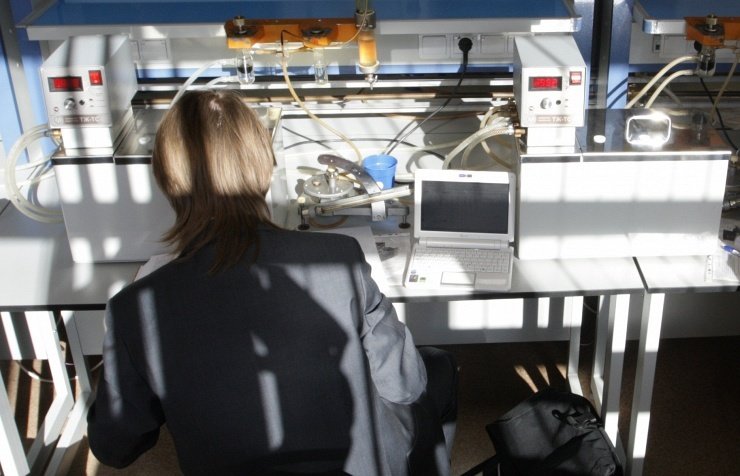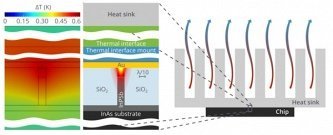
© Marina Lystseva/TASS
Scientists from the Moscow Institute of Physics and Technology (MIPT) have found a solution to the problem of overheating of optoelectronic microprocessors, the institute said in a press release.
"These processors will be able to function tens of thousands time faster than the ones used today", MIPT said.
The speed of multicore and manycore microprocessors, which are already used in high-performance computer systems, depends not so much on the speed of an individual core, but rather on the time it takes for data to be transferred between the cores. The electrical copper interconnects used in microprocessors today are fundamentally limited in bandwidth, and they cannot be used to maintain the continuing growth of the processor performance. In other words, doubling the number of cores will not double the processing power.
Leading companies in the semiconductor industry, such as IBM, Oracle, Intel, and HP, see the only solution to this problem in switching from electronics to photonics, and they are currently investing billions of dollars into this. Replacing electrons with photons will mean that large amounts of data will be able to be transferred between processor cores almost instantly, which in turn will mean that the processor performance will be nearly proportional to the number of cores.
However, due to diffraction, photonic components are not as easy to scale down as electronic components. Their dimensions cannot be smaller than the size approximately equal to the light wavelength (~ 1 micrometer or 1000 nanometers), but transistors will soon be as small as 10 nanometers. This fundamental problem can be solved by switching from bulk waves to surface waves, which are known as surface plasmon polaritons (SPPs).
The main difficulty that scientists face is the fact that SPPs are absorbed by metal, which is a key material in plasmonics. This effect is similar to resistance in electronics, where the energy of electrons is lost and converted into heat when current passes through a resistor. The heating power per surface unit of the active plasmonic waveguide with loss compensation exceeds 10 kW/cm2, which is twice as high as the intensity of solar radiation at the surface of the Sun.

© MIPT press service
Dmitry Fedyanin and Andrey Vyshnevy, researchers at MIPT's Laboratory of Nanooptics and Plasmonics, have found a solution to this problem. They have demonstrated that using high-performance thermal interfaces, i.e. layers of thermally conductive materials placed between the chip and the cooling system to ensure efficient heat removal from the chip.
Based on the results of numerical simulations, Fedyanin and Vyshnevy concluded that if an optoelectronic chip with active plasmonic waveguides is placed in air, its temperature will increase by several hundred degrees Celsius, which will cause the device to malfunction. Multi-layered thermal interfaces of nano-and micrometer thickness combined with simple cooling systems can reduce the temperature of the chip from several hundred degrees to approximately ten degrees above the ambient temperature. This opens the prospects for the implementation of high-performance optoelectronic microprocessors in a wide range of applications, ranging from supercomputers to compact electronic devices.
The study was supported by a grant of the Russian Science Foundation and the MIPT Project 5-100 program. The research paper was published in ACS Photonics.
Reader Comments
to our Newsletter